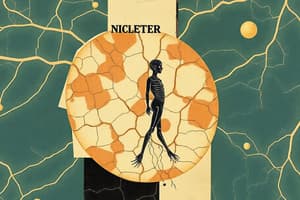Podcast
Questions and Answers
What is the common source from which connective tissues derive in embryonic development?
What is the common source from which connective tissues derive in embryonic development?
Mesenchyme
What is the most common function of all connective tissues?
What is the most common function of all connective tissues?
To maintain the stability of the organism’s internal environment (homeostatic)
What is the main function of connective tissues in providing gas exchange in other tissues?
What is the main function of connective tissues in providing gas exchange in other tissues?
Respiratory function
What are the three different forms of intercellular substance found in connective tissues?
What are the three different forms of intercellular substance found in connective tissues?
What are the various supportive, mechanic functions of connective tissues?
What are the various supportive, mechanic functions of connective tissues?
What are the 5 subgroups of connective tissues?
What are the 5 subgroups of connective tissues?
What are the functions of blood?
What are the functions of blood?
What is the composition of plasma in blood?
What is the composition of plasma in blood?
What are the formed blood cells in blood composition?
What are the formed blood cells in blood composition?
What is the embryonic origin of blood?
What is the embryonic origin of blood?
Flashcards are hidden until you start studying




